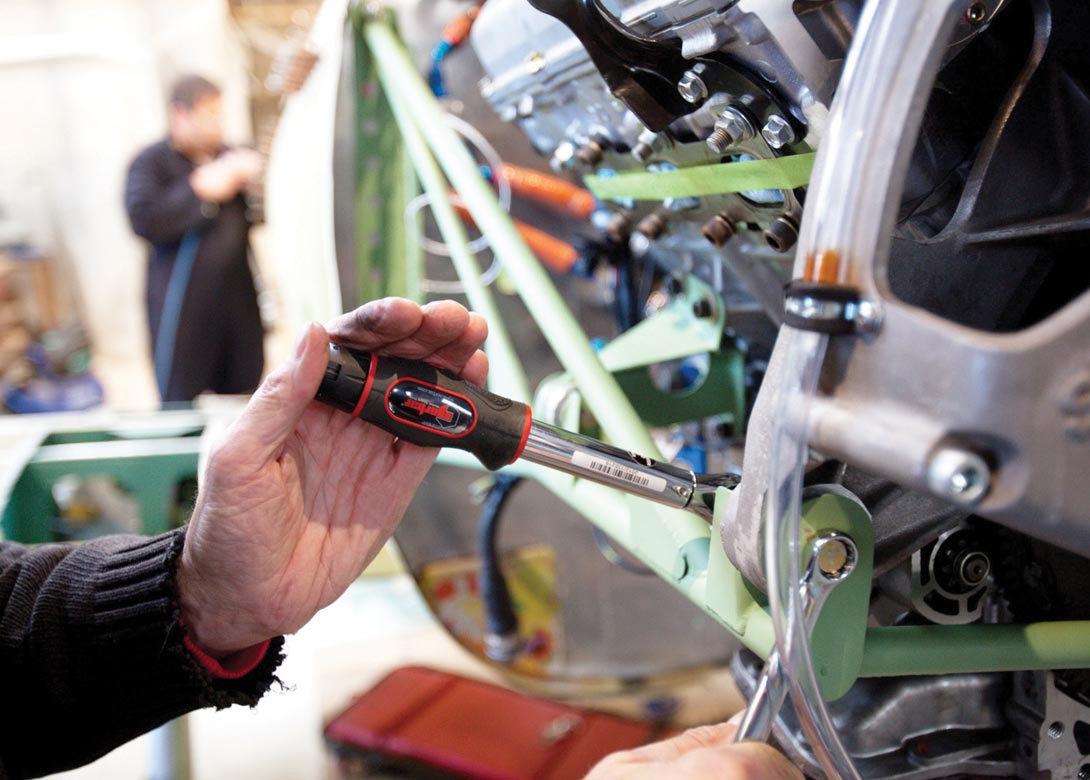
Storing your torque wrench
When a torque wrench is in regular use it does not need to be wound back. However, when storing a torque wrench for an extended period of time, users should always wind it down to the minimum scale setting and never to zero.
A fully loaded torque wrench, left in storage for a long period, can cause a ‘set’ in the spring, causing it to weaken over time. On the other end of the scale, by completely offloading the spring, other components within the wrench may move fractionally relative to each other. When you reapply spring compression the orientation of these components can change, therefore affecting accuracy. All in all, it is better to leave a bit of compression in the spring when in storage.
For accurate results, one click is enough
Users often allow torque wrenches to click multiple times, without being aware of the additional torque being applied to the bolts. Operate your torque wrench in a smooth and steady manner and remember: One click is enough.
Using your wrench on an anti-clockwise thread
Many torque wrenches will only indicate in the clockwise direction. Therefore it is necessary for users to always check the wrench’s specification before using it on an anti-clockwise thread, to ensure the tool is suitable and prevent a loss of torque control.
Adjusting your torque wrench
Equipment manufacturers will always provide the required torque for any given piece of equipment, so it is important to ensure that these levels are met. Remember to always adjust the wrench up the scale to the required torque figure to ensure accurate setting.
Using marked loading points for accurate results
Most torque wrenches are length dependent and feature a marked loading point on the handle. It’s essential this load point is observed when it comes to calibrating the torque wrench.
Using torque wrenches for undoing
So long as users operate with caution and do not exceed the maximum torque, most torque wrenches can be used for undoing. If the bolt will not free within the maximum torque of the wrench, another tool should be used instead as the wrench accuracy can be affected.
Adding extensions to the torque wrench handle
Users should never put a pipe or any other kind of extension onto a torque wrench handle as doing so can seriously damage the tool and make it inaccurate.
Locking it in
It can be all too easy to accidentally adjust the settings of a wrench during use so, if your torque wrench is fitted with an adjustment lock, you should always apply it before operating the wrench.
Applying ‘crows foot’ type fittings to a torque wrench
‘Crows foot’ type fittings can be applied to a torque wrench square drive but they will alter the torque. It is therefore important that a suitable offset is applied to the set torque.

Having spent a decade in the fastener industry experiencing every facet – from steel mills, fastener manufacturers, wholesalers, distributors, as well as machinery builders and plating + coating companies, Claire has developed an in-depth knowledge of all things fasteners.
Alongside visiting numerous companies, exhibitions and conferences around the world, Claire has also interviewed high profile figures – focusing on key topics impacting the sector and making sure readers stay up to date with the latest developments within the industry.
Don't have an account? Sign Up
Signing up to FastFixTechnology.com enables you to manage your account details.